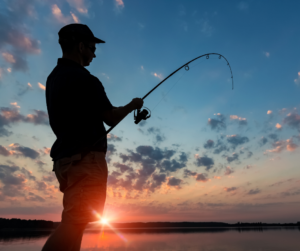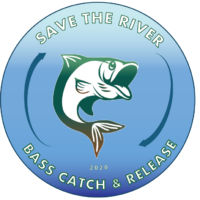“. . . because a bass is too valuable to catch only once.”
The Thousand Islands section of the St. Lawrence River has long supported one of the best bass fisheries in Ontario and New York. It was this fishery that helped develop tourism on the River over a century ago. However the River environment today is far different from 100 years ago and the fishery is not limitless like was once thought.
 Since 1987 Save The River has promoted catch and release fishing for muskellunge, a species threatened on the St. Lawrence River. The addition of bass to Save The River’s Catch and Release Program is a continuation of our efforts to improve the overall health of the St. Lawrence River and to ensure a healthy, sustainable fishery.
Since 1987 Save The River has promoted catch and release fishing for muskellunge, a species threatened on the St. Lawrence River. The addition of bass to Save The River’s Catch and Release Program is a continuation of our efforts to improve the overall health of the St. Lawrence River and to ensure a healthy, sustainable fishery.
Bass populations in the River and eastern Lake Ontario have steadily declined since the late 1980s and recent assessment information from New York and Ontario suggests that bass populations are, at best, stable, and, at worse, still declining. Studies also show that bass are growing faster and getting bigger by a given age, but that there may be fewer of them in older age classes. This means that some bass are reaching the legal size limit before they have a chance to reproduce and help grow the population.
Catch and release fishing and selective harvest have become globally accepted practices as ways to contribute to sustainable game fish populations. Many anglers practice these techniques but more can be done to maximize the benefit of this conservation practice on the River.
With increased fishing pressure on the St. Lawrence River we must work together to ensure a sustainable fishery. Anglers practicing selective harvest should take smaller legal-sized bass and release the larger bass that they catch. The conservation value of a larger, more mature fish is that it will be capable of reproducing and keeping the population up.
 Anglers should also refrain from fishing for bass on their nests. Male bass guard the nests from predators such as Round Gobies. Studies have shown that gobies consume an average of 2,000 eggs per nest from the nests of Smallmouth Bass when the guarding male is removed. With estimates of billions of gobies in the nearshore areas of the Great Lakes and St. Lawrence River, they have become serious egg predators for a number of resident species, including smallmouth bass.
Anglers should also refrain from fishing for bass on their nests. Male bass guard the nests from predators such as Round Gobies. Studies have shown that gobies consume an average of 2,000 eggs per nest from the nests of Smallmouth Bass when the guarding male is removed. With estimates of billions of gobies in the nearshore areas of the Great Lakes and St. Lawrence River, they have become serious egg predators for a number of resident species, including smallmouth bass.
Save The River believes the bass population in the St. Lawrence River will benefit greatly if anglers keep only what they will eat that day and release the rest. Practicing catch and release fishing during bass season will help make certain there will be bass for our children and their children to enjoy.
Tips for Successful Release
To limit stress on the bass, anglers should:
- Take measurements and photos quickly. Fish need water to breath and minimizing air exposure is key to a successful release.
- When landing the fish use nets with knotless nylon or rubber netting.
Bass prefer water to air!
How You Can Participate!
Check out Save The River’s Facebook page to enter a photo of your catch and release bass in our photo contest. Each month’s submissions will be shown at our annual Winter Environmental Conference, and we will announce the winner who will receive a special prize.
Save The River’s Catch & Release program is sponsored by:
- ROSCO Terminal Tackle, quality American-made tackle since 1926
- Clayton Fishing Guide Association
- Chaumont Hardware
- Clayton Marina
- Garnsey’s Classic Island Cruises
- Freighters
- Rush Outdoors
- Seaway Charters
- Swenson Charter
- 1000 Islands Bait Store
- And funded in part by a generous donation from Dan and Peggy LeKander
Scientific review by Dr. Bruce Tufts, Professor, Queens University, Director, Queens University Biological Station
For additional information or to get involved, stop by Save The River or contact Chelsea, Outreach Coordinator at outreach@savetheriver.org.

